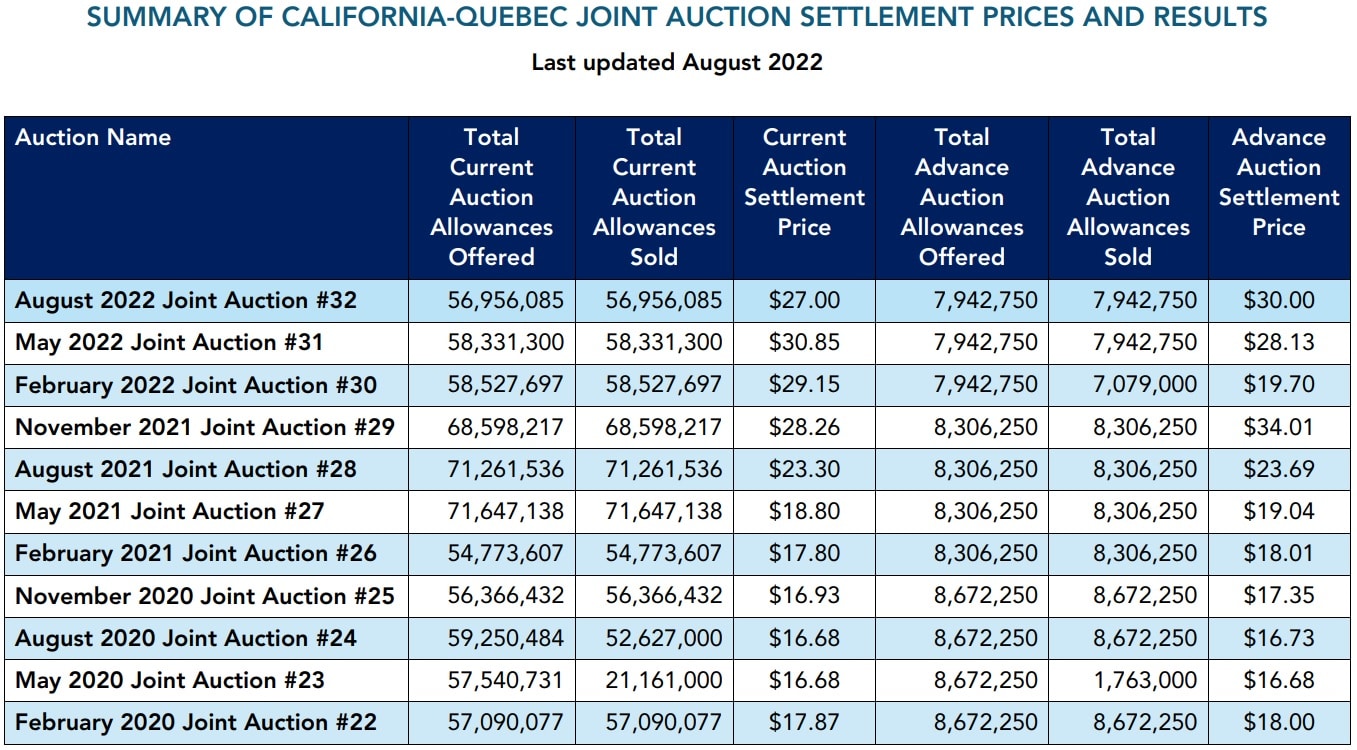California’s Thirty-Second Carbon Auction Price Hits One-Year Low

The thirty-second quarterly carbon auction held by California and Quebec sold all of the about 57 million carbon permits offered for current emissions at a price of $27 per allowance, above the floor price of $19.70, according to the results released on Aug. 24 by the California Air Resources Board. The settlement price dropped by about 12.4 percent compared with the previous quarterly auction, which settled at $30.85. The price is also the lowest since the August 2021 auction, which settled at $23.30 per allowance.
The auction for vintage 2025 allowances sold all of the more than 7.9 million allowances offered for $30 per allowance, well above the reserve price of $19.70. This is the second highest price for a forward vintage auction to date, behind the November auction, which cleared at $34.01 per allowance.
Parties obligated to comply with California and Quebec cap-and-trade programs made up 87.6 percent of the current vintage allowance buyers and 82.3 percent of the advanced allowance purchases, compared with 87.7 percent and 85.7 percent, respectively, at the May auction.
The cap-and-trade program has raised $19.2 billion since compliance began in 2013, according to the board. The auction proceeds are placed in the Greenhouse Gas Reduction Fund and distributed through the California Climate Investments initiative to statewide projects that deliver environmental, economic, and public health benefits across the state. The money is allocated to individual projects selected by over 20 different state agencies.
The board is currently in the process of developing the third update to its climate change scoping plan which was initially issued in 2008. A draft plan released on May 10 assessed four potential scenarios for reaching carbon neutrality, all of which would accomplish the 2030 goal of reducing emissions 40 percent below 1990 levels. The draft also includes a review of existing climate programs in California, such as low carbon fuel standards, cap-and-trade, and renewables portfolio standards. It outlines how these programs have changed since the last scoping plan in 2017, as well as what other initiatives are needed to achieve low-carbon economies.
The California cap-and-trade program, which covers major sources of the state’s greenhouse gas emissions, including power plants and transportation fuels, requires a 40 percent cut in emissions from 1990 levels by 2030. The policy survived long-standing litigation when the court ruled that cap-and-trade does not impose an unconstitutional tax.
California also aims to achieve 100 percent carbon-free electricity by 2045 and economy-wide carbon neutrality by 2045. Quebec is aiming for a 37.5 percent reduction from 1990 emissions by 2030.
EnerKnol Pulses like this one are powered by the EnerKnol Platform—the first comprehensive database for real-time energy policy tracking. Sign up for a free trial below for access to key regulatory data and deep industry insights across the energy spectrum.
ACCESS FREE TRIAL